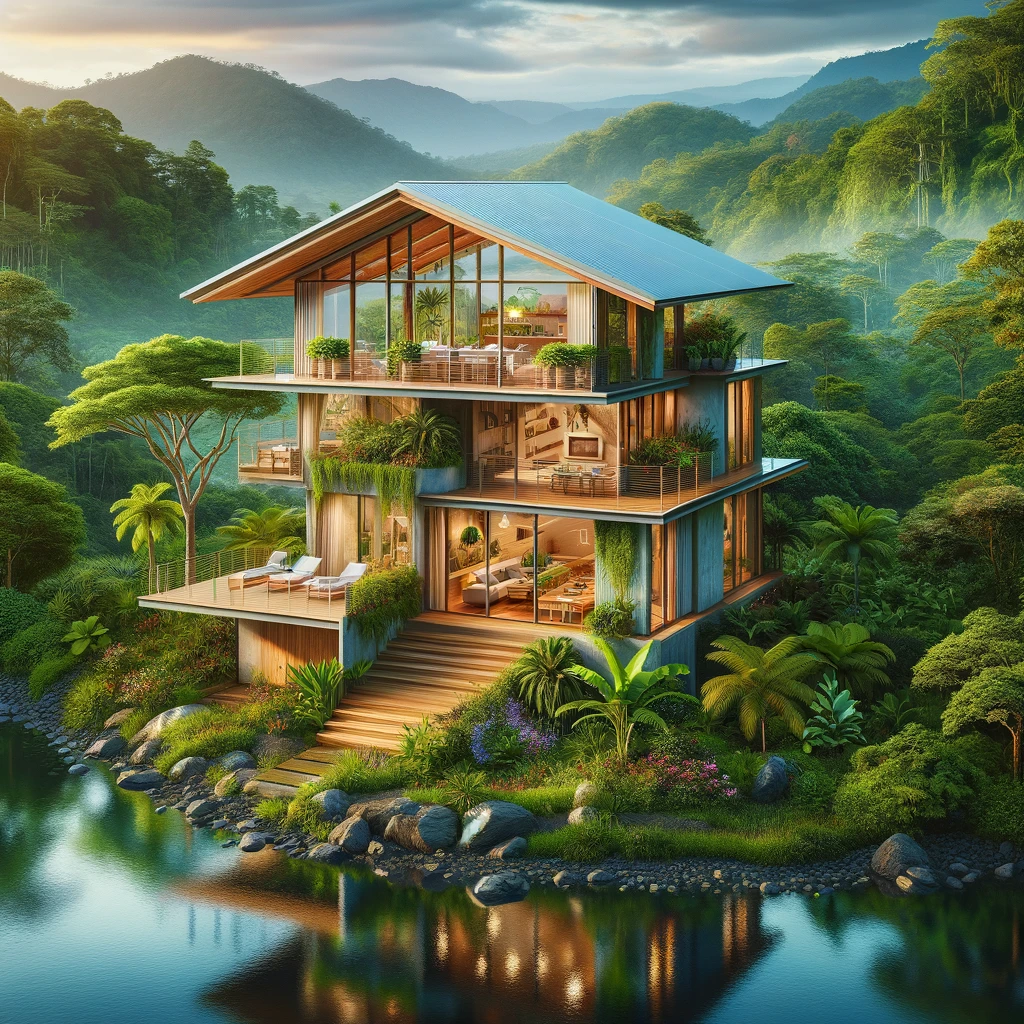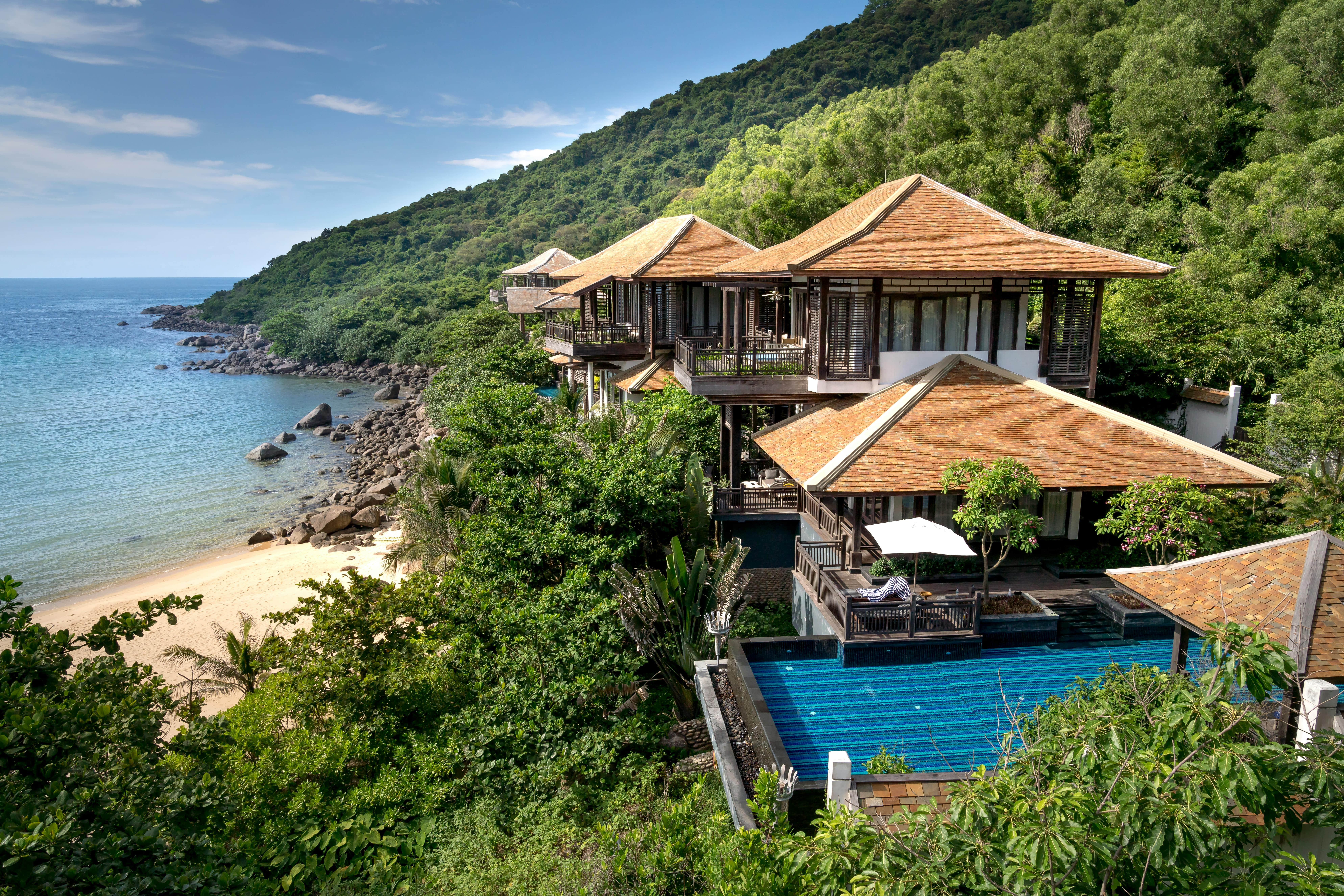Key Characteristics of Traditional Costa Rican Architecture
Traditional Costa Rican architecture is characterized by its vibrant colors, clay-tiled roofs, and decorative wooden accents. The use of locally-sourced materials such as adobe, bamboo, and palm creates a unique aesthetic that is both charming and sustainable. Additionally, traditional homes in Costa Rica often feature large verandas or “corredores” that provide shade and promote outdoor living, showcasing the importance of blending indoor and outdoor spaces in design.
Another key characteristic of traditional Costa Rican architecture is the incorporation of elements that are reflective of the country’s biodiversity and culture. From intricate hand-painted ceramic tiles to intricate wrought iron details inspired by nature, these design elements add a sense of authenticity and connection to the surrounding natural environment. The focus on craftsmanship and attention to detail in traditional Costa Rican architecture highlights a deep respect for heritage and a commitment to preserving cultural identity through architecture.
• Vibrant colors, clay-tiled roofs, and decorative wooden accents
• Use of locally-sourced materials such as adobe, bamboo, and palm
• Large verandas or “corredores” for shade and outdoor living
• Incorporation of elements reflective of biodiversity and culture
• Hand-painted ceramic tiles and wrought iron details inspired by nature
• Focus on craftsmanship and attention to detail for preserving cultural identity
Innovative Use of Sustainable Materials in Costa Rican Construction
Costa Rican construction practices have long embraced the use of sustainable materials to create environmentally friendly buildings. One of the innovative materials gaining popularity in construction is bamboo, known for its strength, flexibility, and quick growth cycle. Builders are increasingly incorporating bamboo into their designs for structural elements, flooring, and decorative finishes, showcasing the versatility of this eco-friendly material.
Another sustainable material commonly used in Costa Rican construction is palm, particularly for roofing thatch and decorative accents. Palm leaves provide excellent insulation and are readily available in the tropical climate of Costa Rica. By utilizing palm in construction, builders are able to reduce their carbon footprint while embracing traditional building methods that have been passed down through generations. The incorporation of sustainable materials not only benefits the environment but also adds a unique aesthetic to Costa Rican architecture, blending modern design with natural elements.
– Bamboo is known for its strength, flexibility, and quick growth cycle
– Builders are incorporating bamboo into structural elements, flooring, and decorative finishes
– Palm leaves are commonly used for roofing thatch and decorative accents in Costa Rican construction
– Palm provides excellent insulation and is readily available in the tropical climate of Costa Rica
– Utilizing palm helps reduce carbon footprint while embracing traditional building methods
Traditional Building Techniques Passed Down Through Generations
Traditional Costa Rican architecture is deeply rooted in the rich cultural heritage of the country, with building techniques that have been passed down through generations. These traditional methods emphasize the use of locally sourced materials and sustainable practices, reflecting a deep respect for the environment and a commitment to preserving the natural beauty of Costa Rica.
From the intricate wood carvings to the vibrant colors used in decorations, every aspect of traditional Costa Rican architecture tells a story of the country’s history and traditions. The craftsmanship and attention to detail that are hallmarks of these building techniques serve as a testament to the skill and dedication of generations of builders who have contributed to shaping the architectural landscape of Costa Rica.
• Traditional Costa Rican architecture is deeply rooted in the rich cultural heritage of the country
• Building techniques have been passed down through generations
• Emphasize use of locally sourced materials and sustainable practices
• Reflect a deep respect for the environment and commitment to preserving natural beauty
From the intricate wood carvings to the vibrant colors used in decorations, every aspect of traditional Costa Rican architecture tells a story of the country’s history and traditions. The craftsmanship and attention to detail that are hallmarks of these building techniques serve as a testament to the skill and dedication of generations of builders who have contributed to shaping the architectural landscape of Costa Rica.
Incorporation of Indigenous Design Elements in Costa Rican Architecture
In Costa Rican architecture, the incorporation of indigenous design elements plays a significant role in preserving the country’s rich cultural heritage. Traditional building techniques, such as the use of natural materials like wood and adobe, reflect the strong connection to the land and respect for the environment that has been passed down through generations.
Indigenous design elements are often characterized by vibrant colors, intricate patterns, and symbolic motifs that hold deep cultural significance. These elements can be seen in the intricate carvings on wooden doorways, colorful paintings adorning walls, and decorative pottery displayed throughout Costa Rican homes and buildings. By incorporating these indigenous design elements, Costa Rican architecture not only showcases the country’s diverse cultural identity but also pays homage to the indigenous communities that have shaped its unique architectural landscape.
– Indigenous design elements in Costa Rican architecture help preserve the country’s cultural heritage
– Traditional building techniques using natural materials like wood and adobe reflect a strong connection to the land
– Vibrant colors, intricate patterns, and symbolic motifs are characteristic of indigenous design elements
– Intricate carvings on wooden doorways, colorful paintings on walls, and decorative pottery are common features in Costa Rican architecture
– Incorporating indigenous design elements pays homage to the indigenous communities that have influenced Costa Rican architectural style
For more information click here!
The Influence of Colonial Spanish Architecture on Costa Rican Building Methods
Colonial Spanish architecture has left a lasting impact on the building methods seen throughout Costa Rica. One of the most prominent features borrowed from this influence is the widespread use of adobe, a material made of earth and organic materials. This technique, dating back centuries, is valued for its thermal properties that help regulate indoor temperatures, making it a practical choice for the tropical climate of Costa Rica.
Furthermore, the layout of many Costa Rican homes and buildings reflects the Spanish colonial style, characterized by central courtyards and open-air spaces. This design encourages natural ventilation and the flow of natural light, creating a comfortable and airy environment within the structures. The incorporation of these elements showcases how the colonial Spanish architecture has not only influenced the aesthetic appeal but also the functionality of Costa Rican building methods.
• Adobe, a material made of earth and organic materials, is widely used in Costa Rican building methods
• Adobe’s thermal properties help regulate indoor temperatures in the tropical climate of Costa Rica
• Central courtyards and open-air spaces are common features in Costa Rican homes and buildings
• Spanish colonial style layout encourages natural ventilation and flow of natural light
• The incorporation of these elements showcases how colonial Spanish architecture has influenced both aesthetics and functionality in Costa Rican building methods
Adapting to Costa Rica’s Tropical Climate in Construction Practices
Costa Rica’s tropical climate presents unique challenges for architects and builders in the region. With high humidity, heavy rainfall, and intense sunlight, it is essential to adapt construction practices to ensure longevity and sustainability of structures. One common strategy used in Costa Rican architecture is the incorporation of large overhanging eaves to provide shade and protection from the sun, helping to reduce heat absorption and maintain cooler indoor temperatures.
Furthermore, buildings are often designed with ample cross-ventilation to promote airflow and natural cooling, reducing the reliance on artificial cooling systems. Traditional construction methods such as elevated floors and thatched roofs also help in managing the tropical climate by allowing for air circulation and preventing moisture buildup. By integrating these strategies into design and construction practices, architects in Costa Rica can create buildings that are well-suited to the demands of the tropical environment.
• Large overhanging eaves provide shade and protection from the sun
• Ample cross-ventilation promotes airflow and natural cooling
• Elevated floors and thatched roofs allow for air circulation and prevent moisture buildup
The Role of Bamboo and Palm in Costa Rican Building Materials
Bamboo and palm are two essential materials utilized in traditional Costa Rican architecture. Known for their sustainability and versatility, these materials have been integral in the construction of homes and structures across the country for centuries. Bamboo, with its rapid growth and high strength-to-weight ratio, is commonly used for structural elements such as beams, columns, and thatching.
Palm, on the other hand, is often used for roofing due to its natural waterproof properties and insulating capabilities. The use of these natural materials not only connects the buildings to their surrounding environment but also helps in regulating the internal temperature, making them ideal for Costa Rica’s tropical climate. As building trends continue to evolve, the role of bamboo and palm in Costa Rican building materials remains prevalent, showcasing the sustainable practices deeply rooted in the country’s architectural heritage.
• Bamboo and palm are essential materials in traditional Costa Rican architecture
• Bamboo is known for its rapid growth and high strength-to-weight ratio
• Palm is often used for roofing due to its natural waterproof properties and insulating capabilities
• These materials help regulate internal temperature, ideal for Costa Rica’s tropical climate
• The use of bamboo and palm connects buildings to their surrounding environment
• Sustainable practices in Costa Rican architecture showcase the importance of these natural materials
Utilizing Earthquake-Resistant Methods in Costa Rican Construction
Costa Rica, nestled in a seismically active region, has long been prone to earthquakes that have shaped the construction practices of the country. Engineers and architects in Costa Rica have developed innovative earthquake-resistant methods to mitigate the risk of structural damage during seismic activity. One common technique involves the use of reinforced concrete columns and beams, which provide added strength and flexibility to buildings, allowing them to withstand the shaking and shifting caused by earthquakes.
In addition to reinforced concrete structures, Costa Rican builders often incorporate base isolators into their construction designs. These isolators act as shock absorbers, allowing the building to move independently from the ground during an earthquake. By implementing these earthquake-resistant methods, Costa Rican construction projects can better protect the safety of occupants and minimize potential damage to buildings, contributing to the overall resilience of the country’s built environment.
• Reinforced concrete columns and beams are commonly used in Costa Rican construction
• These structures provide added strength and flexibility to buildings
• Base isolators are often incorporated into construction designs for earthquake resistance
• Isolators act as shock absorbers, allowing the building to move independently from the ground during seismic activity
• Utilizing earthquake-resistant methods helps protect occupants’ safety and minimize damage to buildings
The Importance of Ventilation and Natural Light in Costa Rican Architecture
In Costa Rican architecture, the incorporation of ample ventilation and natural light plays a crucial role in the design and functionality of buildings. The tropical climate of Costa Rica, with its warm temperatures and high humidity levels, necessitates the use of strategic architectural elements to ensure comfortable living spaces. By maximizing natural ventilation through the positioning of windows, doors, and open-air corridors, architects are able to create homes that promote air circulation and cooling breezes. Additionally, the integration of large windows and skylights allows for the entry of abundant natural light, reducing the need for artificial lighting during the day and creating a bright and airy atmosphere within the interiors.
Furthermore, the emphasis on ventilation and natural light in Costa Rican architecture not only enhances the comfort and livability of spaces but also contributes to the overall sustainability of buildings. By reducing the reliance on mechanical ventilation systems and artificial lighting, architects are able to minimize energy consumption and environmental impact. This harmonious integration of architectural design with natural elements not only reflects the cultural values of living in harmony with nature but also showcases the innovative approaches that Costa Rican architects are employing to create sustainable and eco-friendly buildings.
• The incorporation of ample ventilation and natural light in Costa Rican architecture is crucial for comfortable living spaces.
• Strategic architectural elements such as windows, doors, and open-air corridors maximize natural ventilation and promote air circulation.
• Large windows and skylights allow for the entry of abundant natural light, reducing the need for artificial lighting during the day.
• Emphasis on ventilation and natural light enhances comfort, livability, and sustainability of buildings in Costa Rica.
• By reducing reliance on mechanical ventilation systems and artificial lighting, architects minimize energy consumption and environmental impact.
• Harmonious integration of architectural design with natural elements reflects cultural values of living in harmony with nature.
Modern Trends in Green Building Practices in Costa Rica
In recent years, Costa Rica has seen a significant rise in the adoption of modern green building practices within its construction industry. Architects and builders are increasingly incorporating sustainable materials, energy-efficient designs, and eco-friendly technologies into their projects. This shift towards environmentally conscious construction methods reflects a growing awareness of the need to reduce carbon footprints and minimize the impact of buildings on the natural environment.
One key trend in green building practices in Costa Rica is the use of renewable energy sources such as solar panels and wind turbines to power homes and commercial buildings. By harnessing the abundant natural resources available in the country, developers are able to reduce their reliance on traditional energy sources and lower their overall energy costs. Additionally, the integration of smart technologies, such as energy-efficient lighting and heating systems, further enhances the sustainability of modern structures in Costa Rica.
• Integration of renewable energy sources like solar panels and wind turbines
• Use of eco-friendly materials in construction
• Incorporation of smart technologies for energy efficiency
• Implementation of water-saving techniques such as rainwater harvesting and greywater recycling
• Emphasis on natural lighting and ventilation to reduce the need for artificial heating and cooling systems
What are some key characteristics of traditional Costa Rican architecture?
Traditional Costa Rican architecture often features open-air designs, use of local materials such as bamboo and palm, and elevated structures to promote airflow.
How are sustainable materials being used in Costa Rican construction?
Sustainable materials such as bamboo, recycled wood, and locally sourced stones are being used in modern construction to reduce environmental impact.
Are traditional building techniques still being used in Costa Rica?
Yes, traditional building techniques such as adobe construction and thatched roofs are still being used and passed down through generations in Costa Rica.
How are indigenous design elements incorporated into Costa Rican architecture?
Indigenous design elements such as colorful paint patterns, handcrafted tiles, and natural textures are often incorporated into modern Costa Rican architecture.
What role does colonial Spanish architecture play in Costa Rican building methods?
Colonial Spanish architecture has influenced Costa Rican building methods, with features such as courtyards, arched doorways, and tiled roofs being common in modern constructions.
How do construction practices in Costa Rica adapt to the tropical climate?
Construction practices in Costa Rica adapt to the tropical climate by incorporating features such as elevated structures, natural ventilation, and large windows for airflow.
What are the benefits of using bamboo and palm in Costa Rican building materials?
Bamboo and palm are sustainable, renewable materials that are strong, flexible, and resistant to pests, making them ideal choices for building materials in Costa Rica.
How is earthquake-resistant construction implemented in Costa Rica?
Costa Rican construction often incorporates earthquake-resistant methods such as flexible foundations, reinforced columns, and lightweight materials to mitigate damage in the event of seismic activity.
Why is ventilation and natural light important in Costa Rican architecture?
Ventilation and natural light are important in Costa Rican architecture to promote airflow, reduce humidity, and create a comfortable living environment in the tropical climate.
What are some modern trends in green building practices in Costa Rica?
Modern trends in green building practices in Costa Rica include incorporating solar panels, rainwater harvesting systems, green roofs, and energy-efficient appliances to reduce environmental impact and promote sustainability.






